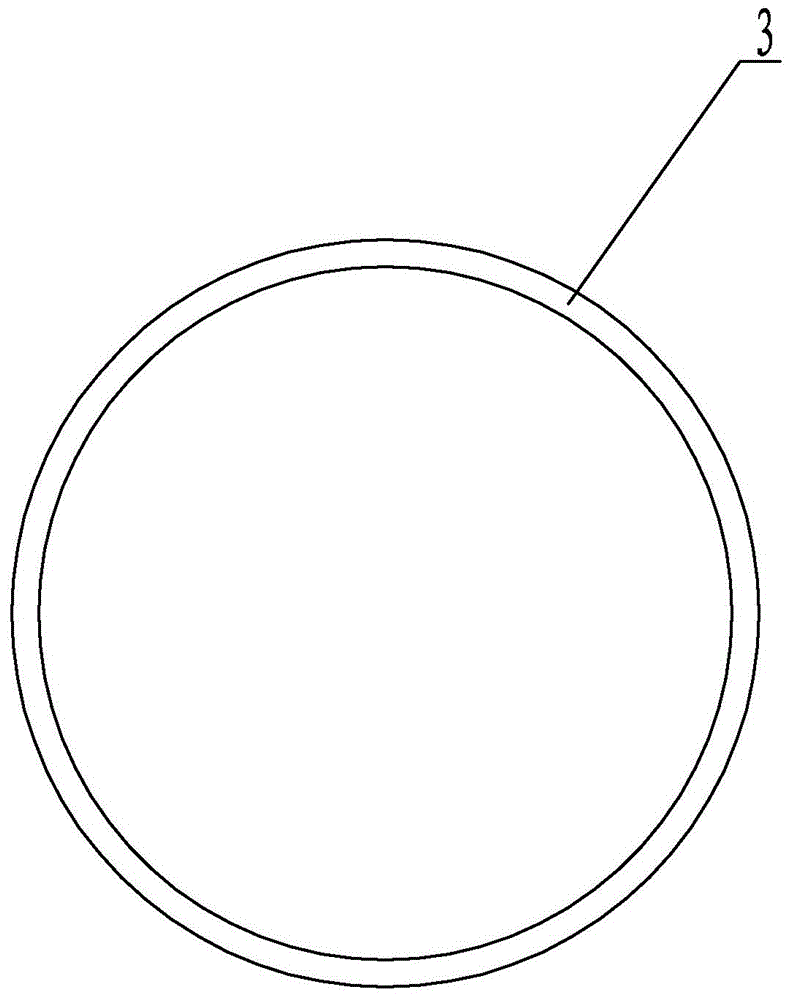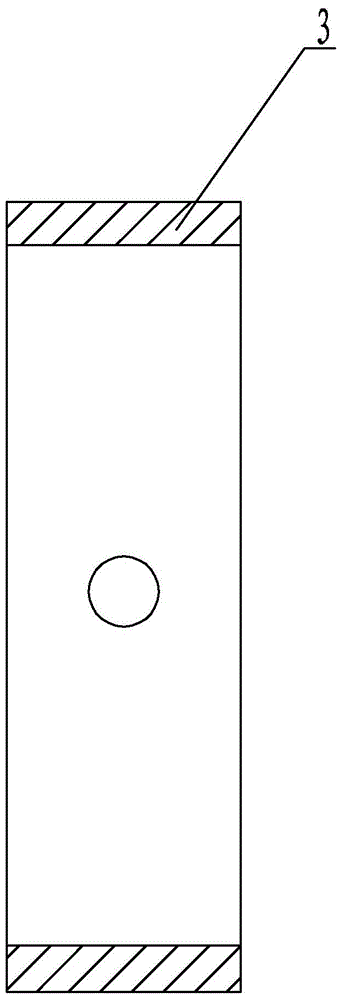Cylindrical cuspend magnetic field thruster
A tangential magnetic field and cylindrical technology, which is applied in the field of cylindrical tangential magnetic field thrusters, can solve the problems of long ceramic channel length and small radial size of the thruster, and achieve the reduction of axial size and increase of radial size , The effect of improving the utilization rate
- Summary
- Abstract
- Description
- Claims
- Application Information
AI Technical Summary
Problems solved by technology
Method used
Image
Examples
specific Embodiment approach 1
[0010] Specific implementation mode one: combine figure 1 , figure 2 with image 3 Describe this embodiment, a cylindrical tangent magnetic field thruster of this embodiment includes a bracket plate 1, a ceramic base 2, an annular anode 3, a cylindrical ceramic channel body 4, a gas distributor 5, a nut 6, and a conductive bolt 7 , two ceramic gaskets 8, air guide 9, aluminum alloy bracket 10, first aluminum alloy bracket 11, magnetic guide base 12, coil 13, first magnetic guide 14, outer aluminum alloy sleeve 15, coil support 16. Ceramic end cap 21, magnet bracket 18, magnet 19, second aluminum alloy end cap 20, ceramic end cap 21 and a plurality of second magnetically conductive parts 17,
[0011] The left end of the cylindrical ceramic channel body 4 is processed with two working fluid jet holes, the air guide 9 is installed on one of the working fluid jet holes, the conductive bolt 7 is penetrated on the other working fluid jet hole, and the two ceramic gaskets 8 are s...
specific Embodiment approach 2
[0014] Specific implementation mode two: combination figure 1 To illustrate this embodiment, the annular anode 3 in the middle of the inner wall of the cylindrical ceramic channel body 4 is located in the middle of the coil 13 on the outer wall of the cylindrical ceramic channel body 4 in this embodiment. Such setting will change the potential distribution inside the ceramic channel body 4, so that electrons have a tendency to move toward the side wall of the channel. During the movement of electrons to the anode on the side wall of the channel, they need to cross multiple magnetic induction lines in the radial direction, so more electrons will be distributed in the area away from the central axis of the channel, thereby increasing the radial size of the ionization zone and making it Increased channel utilization. Other compositions and connections are the same as in the first embodiment.
specific Embodiment approach 3
[0015] Specific implementation mode three: combination figure 1 Describe this embodiment, the annular anode 3 of this embodiment is fixed on the outer wall of the cylindrical ceramic channel body 4 by bolts, and the wire passes through the bolts fixed on the outer wall of the cylindrical ceramic channel body 4 and the annular anode 3 connect. With such an arrangement, on the one hand, the position of the ring-shaped anode 3 can be changed relatively easily, and on the other hand, the drawn-out wires will not interfere with the movement of electrons inside the channel. Other compositions and connections are the same as those in Embodiment 1 or Embodiment 2.
PUM
 Login to View More
Login to View More Abstract
Description
Claims
Application Information
 Login to View More
Login to View More - R&D
- Intellectual Property
- Life Sciences
- Materials
- Tech Scout
- Unparalleled Data Quality
- Higher Quality Content
- 60% Fewer Hallucinations
Browse by: Latest US Patents, China's latest patents, Technical Efficacy Thesaurus, Application Domain, Technology Topic, Popular Technical Reports.
© 2025 PatSnap. All rights reserved.Legal|Privacy policy|Modern Slavery Act Transparency Statement|Sitemap|About US| Contact US: help@patsnap.com



